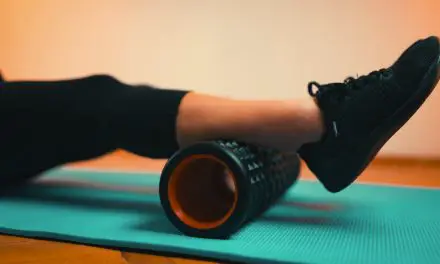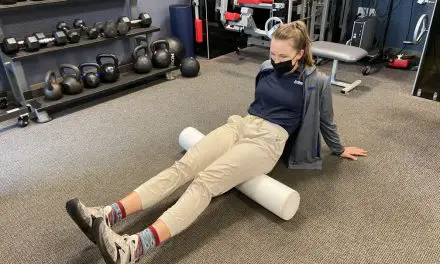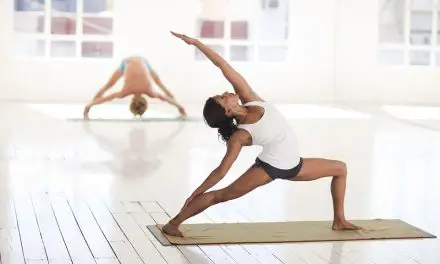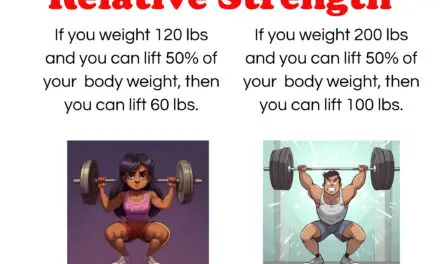A cooldown is any recovery method that is supposed to help transition your body back to its pre-exercise state. Many people believe that a cooldown has many benefits, such as removing metabolic waste faster, reducing the risk of injuries, improving next-day athletic performance, and reducing muscle soreness and muscle tightness.
While cooldowns are quite popular (with more than 628,000 posts on Instagram), there’s no concrete scientific evidence that supports or refutes these benefits. A closer look at the current evidence can help you decide whether you should invest an extra five to ten minutes to cool down.
Types of cooldown
There are two primary types of cooldown: active and passive. While research has shown that neither method is better than the other in reducing muscle soreness, preventing injuries, or promoting relaxation, each type has its pros and cons and may benefit certain populations more than others. This will be discussed later.
Active cooldowns involve you doing some kind of low-intensity activity, such as walking, jogging, stretching, casual swimming at a pool, or foam rolling.
Passive cooldowns are any method that doesn’t require you to move much (e.g. napping, sauna, ice bath) or involves something done to you, such as massage therapy or assisted stretching.
Does a cooldown help recovery?
Current research has mixed results about whether cooldowns can help with recovery or not. It would also depend on which type of recovery you’re talking about, such as fatigue, muscle soreness, and mentally relaxed.
Researchers Bas Van Hooren of Maastricht University Medical Centre in the Netherlands and Jonathan M. Peake of Queensland University of Technology in Brisbane, Australia, dug into the research that compares active recovery with passive recovery because no previous studies have poked into this topic.
Does a cooldown improve athletic performance?
A bundle of research found a tiny reduction in athletic performance when researchers compared a group of athletes who did an active cooldown versus another group that did a passive cooldown. But this reduction is so miniscule that hardly anyone would notice it, especially for non-elite athletes.
While studies that compared performance in the same day (10-meter sprint and vertical jump) found almost no differences between groups, studies that compared next-day performances found mixed results, ranging from “small to moderate” improvements to tiny decreases in performance and “small harmful and trivial effects.”
Van Hooren and Peake speculated that such a wide range of results may stem from different types of cooldowns and exercises used, athletes’ preferences and experience in training, and athletes’ beliefs. Keep in mind that these studies are based on high-intensity, anaerobic training, so no one really knows if this also applies to endurance and recreational athletes.
Does a cooldown prevent injuries?
Some people think that having lower fatigue can lower the risk of getting injured, but there is no evidence that supports this idea. Based on five studies that examined recreational, competitive, and elite runners, Van Hooren and Peaker suggested that cooldowns “does not affect injury rates,” but it’s not certain whether this would apply to other types of activities, like weightlifting and contact sports.
Does a cooldown help remove metabolic wastes?
A majority of research found that active cooldowns are more effective in removing blood lactate from the bloodstream and muscle tissues than passive cooldowns. However, this topic is debatable because it’s not even certain if such metabolic “wastes” are a cause of muscle fatigue and soreness, thus leading a false trail.
Even if a cooldown does bring blood lactate back to the resting state, some evidence found that it’s not that much different than just resting and doing nothing within a 20-minute to a two-hour period.
Does a cooldown reduce muscle soreness?
Since active cooldowns keep the blood flowing and the heart pumping, it’s believed that such cooldowns can help reduce muscle soreness by preventing a buildup of metabolic “wastes” in muscle tissues. Again, research has shown mixed results about whether people should invest in active cooldowns or not to reduce muscle soreness.
Van Hooren and Peake found that “both recreationally active individuals and professional athletes have found no significant effect of an active cool-down on delayed-onset muscle soreness or tenderness at different times following exercise” compared with a passive cooldown.
In laypeople terms, the metabolic “wastes” are often referred to lactic acid or blood lactate that contributes to muscle soreness—or DOMS (delayed onset muscle soreness). But this is a common lactic acid myth that stems from misinterpreting research in the early 20th century that spilled into academia and mainstream media in the next 100 years.
[Details on “Does lactic acid cause muscle soreness?”]
Instead of blaming lactic acid or “toxins” in the muscles, some researchers point to the nervous system as another puzzle piece to uncover why muscles get sore. They proposed that free nerve endings inside the muscle spindles of a skeletal muscle gets squeezed too much during repeated bouts of muscle contractions, specifically eccentric contractions. In their hypothesis, muscle soreness is a “safety function” that prevents you from doing more strenuous exercise that may further damage your tissues.
So do you need to do cool down exercises?
Since there’s no strong evidence to support or refute the idea that you should cool down after exercising, Van Hooren’s take is to let people decide for themselves.
“If you have a limited time for training, I’d suggest using the time you have to actual training, and don’t do a 15-minute cooldown if you only have a 40-minute training session,” Van Hooren said.
As a former running athlete and coach, Van Hooren wanted to explore why coaches often tell their team to go do a cool down.
“Is there evidence to support these things, like cooldowns. Do we actually have evidence that we recover faster or [have] less injuries?” he said. “So I approached Jonathan [Peake] and sent him a draft and he was like, ‘I don’t have time’ initially, then he read the draft and he thought it was ‘pretty good’ and ‘I do have time, so let’s collaborate and co-advise.’.”
Some of the challenges Van Hooren and Peake faced were trying to make sense of the garden variety of studies. “If a study investigated so many outcomes, then we have the challenge of which outcomes do we think are the most relevant and want to discuss,” Van Hooren said. “Otherwise, it could’ve been 20 more pages of discussion like this specific hormone or this effect and this effect and it gets very confusing to read as a page. What should we interpret and take home?”
While there’s no systematic reviews or meta-analyses about active cool-downs for a specific activity, Van Hooren is “confident” that he and Peake had done a thorough search.
“There are many [similar] studies but the results wouldn’t have changed,” he said. He also added that if this were a systematic review, they would’ve included risk of bias assessment and limitations of the research.
“Drawback of a systematic review compared to how I did it now is that you really have less freedom to structure the review the way you want,” Van Hooren said. “I can discuss this topic by topic. In a systematic review, you have to follow the guidelines and have an extensive limitation and risk of bias assessment. It takes away from the practical application.”
A narrative review doesn’t use statistical measurements and jargon to explain the finding, which makes it easier for clinicians and even laypeople to understand. Of course, without such objectivity, a narrative review can be biased in itself if the authors cherry pick studies to fit their biases.
“My easy take home conclusion would be since there isn’t a lot of strong evidence for cooldowns, if people like to perform a cooldown, we should just let them do it. If they don’t like it, then they’re not missing out on anything,” he said.
A native of San Diego for nearly 40 years, Nick Ng is an editor of Massage & Fitness Magazine, an online publication for manual therapists and the public who want to explore the science behind touch, pain, and exercise, and how to apply that in their hands-on practice or daily lives.
An alumni from San Diego State University with a B.A. in Graphic Communications, Nick also completed his massage therapy training at International Professional School of Bodywork in San Diego in 2014.
When he is not writing or reading, you would likely find him weightlifting at the gym, salsa dancing, or exploring new areas to walk and eat around Southern California.





